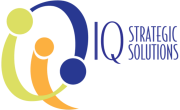
From Onboarding to Success: The Ultimate Guide to Employee Integration
Effective employee integration is the key to long-term retention and high performance. A strong onboarding and workplace integration program ensures new hires feel welcome, understand company expectations, and become productive members of the team quickly. In this blog, we’ll explore best practices for a seamless employee integration process that enhances engagement and reduces turnover.
Why Workplace Integration Matters
Employee integration goes beyond a standard orientation session. A well-structured onboarding experience significantly impacts:
- Retention Rates: Companies with strong onboarding programs improve new hire retention by 82%.
- Employee Productivity: New employees reach full productivity 50% faster with structured integration.
- Workplace Satisfaction: Employees who feel welcomed and supported are more engaged and committed.
Key Elements of a Successful Integration Program
- Pre-Boarding: Setting the Stage Before Day One
- Send welcome emails with essential information before the start date.
- Provide access to a digital employee handbook and introductory videos.
- Assign a mentor or buddy to guide new hires through their first weeks.
- Structured Onboarding Process
- Develop a 30-60-90 day plan outlining clear goals and expectations.
- Schedule introductory meetings with key team members and leadership.
- Offer training sessions to help employees understand job responsibilities and company culture.
- Creating a Supportive Work Environment
- Encourage open communication and feedback from day one.
- Provide access to tools and resources that help employees succeed.
- Celebrate milestones such as completing the first month or first project.
- Leveraging Technology for Seamless Integration
- Use onboarding software to streamline document submission and training.
- Implement virtual onboarding for remote employees to ensure inclusivity.
- Utilize HR analytics to track onboarding success and identify areas for improvement.
- Measuring and Improving the Integration Process
- Conduct regular check-ins with new hires to address concerns and gather feedback.
- Use surveys and data insights to refine onboarding strategies.
- Continuously improve the program to adapt to evolving workforce needs.
Companies That Excel in Employee Integration
Top organizations invest in seamless integration to boost employee success:
- Google: Offers a detailed pre-boarding process and mentorship programs to help new hires adjust quickly.
- HubSpot: Uses technology-driven onboarding, including interactive learning modules and AI-based support.
- Zappos: Focuses on cultural immersion and team-building exercises to strengthen workplace relationships.
Conclusion: Build a Stronger Workforce with Effective Integration
Workplace integration is an ongoing process that shapes employee experience and company success. By investing in a structured onboarding program, businesses can reduce turnover, enhance engagement, and improve productivity.
At IQ, your HR Consultant, we serve as your strategic partner, crafting tailored solutions that address your specific needs.
Your satisfaction is the key to our success!
Contact us!




